As a resident of San Francisco and a documentary photographer, I have been photographing and recording the unhoused of the city for over a decade. My latest photo book, “Division Street,” documents income inequality and human suffering on the streets of San Francisco.
From the street level, where I have worked the last seven years, the city’s response to homelessness looks more like an exercise is publicity management: high profile sweeps led by police that the city claims are a services-first response to homelessness. In reality, these efforts often seem more a magic act, since even the shelter beds the city purports to offer are meant to only be a temporary stop gap on a path to affordable housing.
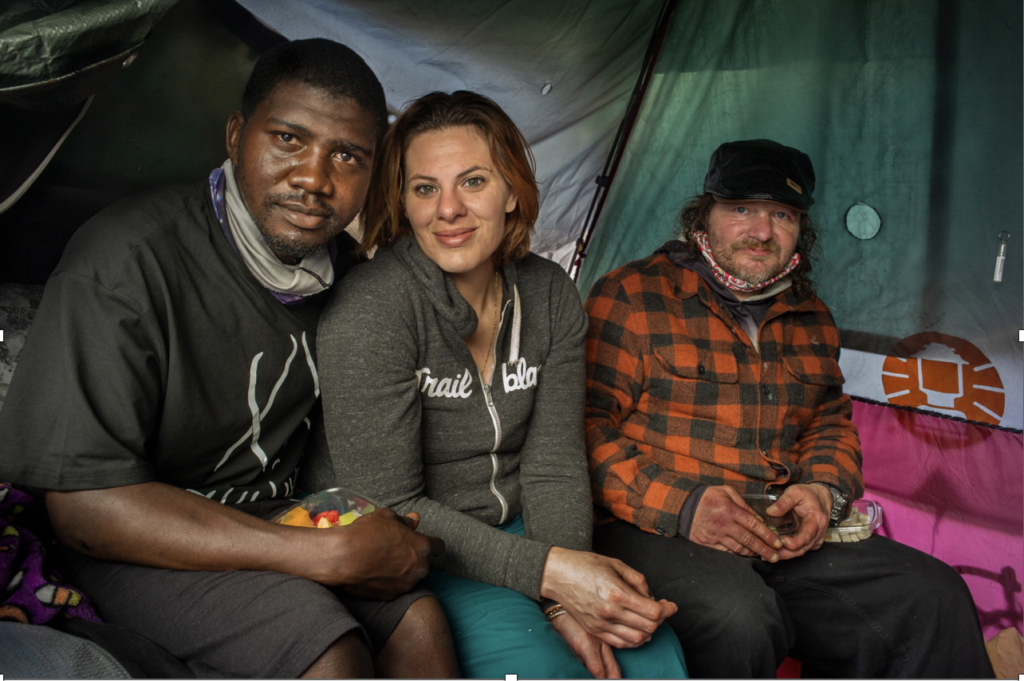
Mia, 31, an unhoused San Francisco resident, sitting in her tent with her boyfriend. Mia said the city had taken many of her survival belongings while she was just trying to get back on her feet during the pandemic. All photos by Robert Gumpert.
But the system is broken. The city does not have anywhere near the amount of affordable housing it needs to keep its residents in housing and, what’s worse, it does not have enough shelter beds to offer even temporary shelter to thousands of our neighbors who are thrust into homelessness every year because of the city’s affordable housing crisis. So, the city attempts the rabbit trick in reference—making homelessness “disappear” into the hat.
The tents, bespoke structures, and rough sleepers disappear and reappear from San Bruno Avenue to 13th Street, from Willow Street to the “Snake Pit,” and so on just about anywhere in the city. While one place or another becomes empty, if you look closely, folks have just “moved house” to someplace else because the city cannot and does not offer them anywhere else to go. Each time, the people the city displaces lose community, safety, and the essential belongings they need to survive. I have witnessed it over and over.
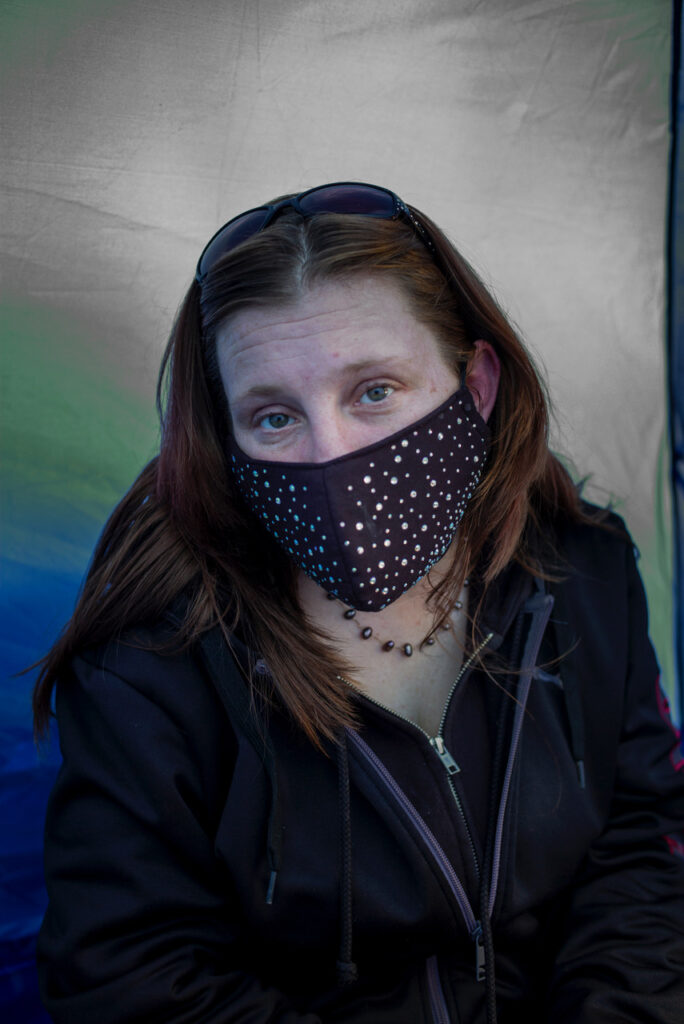
Brandy Ericksen, 39 on Dore talks about daughter, being an unhoused woman. As August 7, 2023, Brandy is still trying to negotiate the city’s process for housing and remains living in a tent on Dore.
The city’s track record is simply terrible. The city destroys people’s survival belongings. Even though I’ve been told there is supposed to be a process called “bag and tag” where a person’s belongings are taken— bagged and tagged—and stored for them to collect at a later time, I’ve seen it only a few times in seven years. The property owners report the bags seem to disappear, never to be seen by the rightful owners.
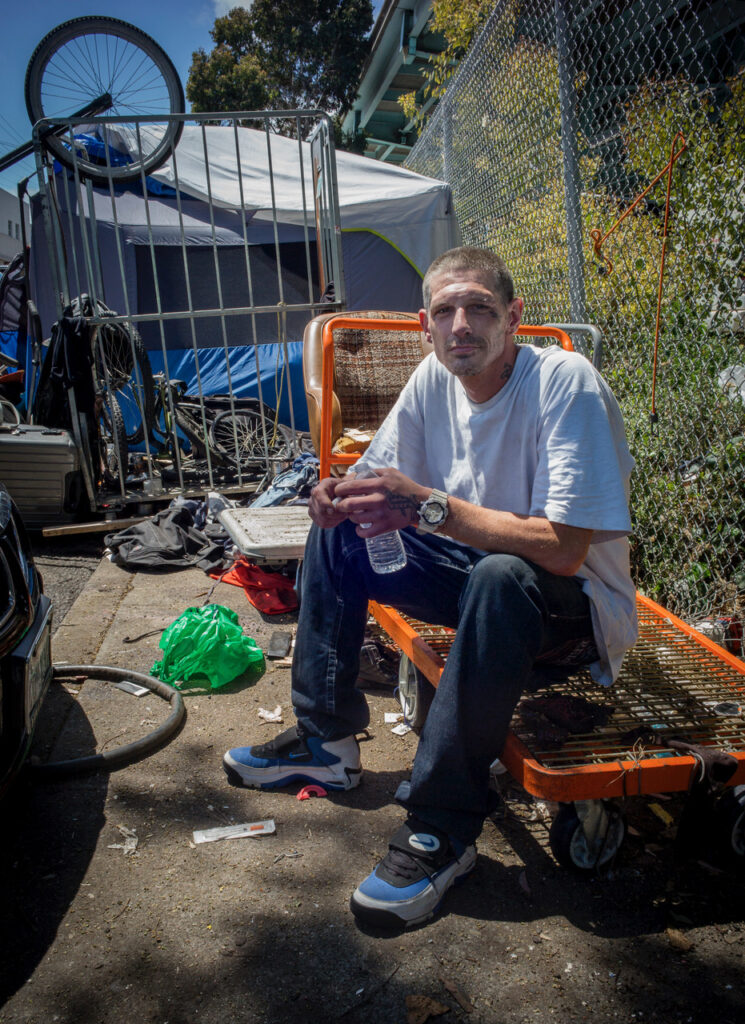
Kasper Greene, at his tent on Vermont near 16th. Kasper remains unhoused and as of August 14 is living in a tent on Division Street near San Bruno Ave.
Help us save local journalism!
Every tax-deductible donation helps us grow to cover the issues that mean the most to our community. Become a 48 Hills Hero and support the only daily progressive news source in the Bay Area.
I have seen sweeps even after the courts ordering a stop to the practice under most circumstance. City employees toss people’s survival belongings (including their blankets, clothes, and sleeping bags and paperwork) into trash trucks. I have recorded the stories of many who have lived this experience, and the stories are harrowing.
Jesse, a 43-year-old staying at the corner of Alameda Street and Utah Street back in January 2021, told me as I photographed her: “[The hardest thing about being out here is] DPW and the police messing with you every day. Forcing you to move and they got no ‘resolution,’ they got no solution, they say get out of here. Move down the street and they power wash everything and throw all your stuff away and then leave you sitting out there in the rain.”
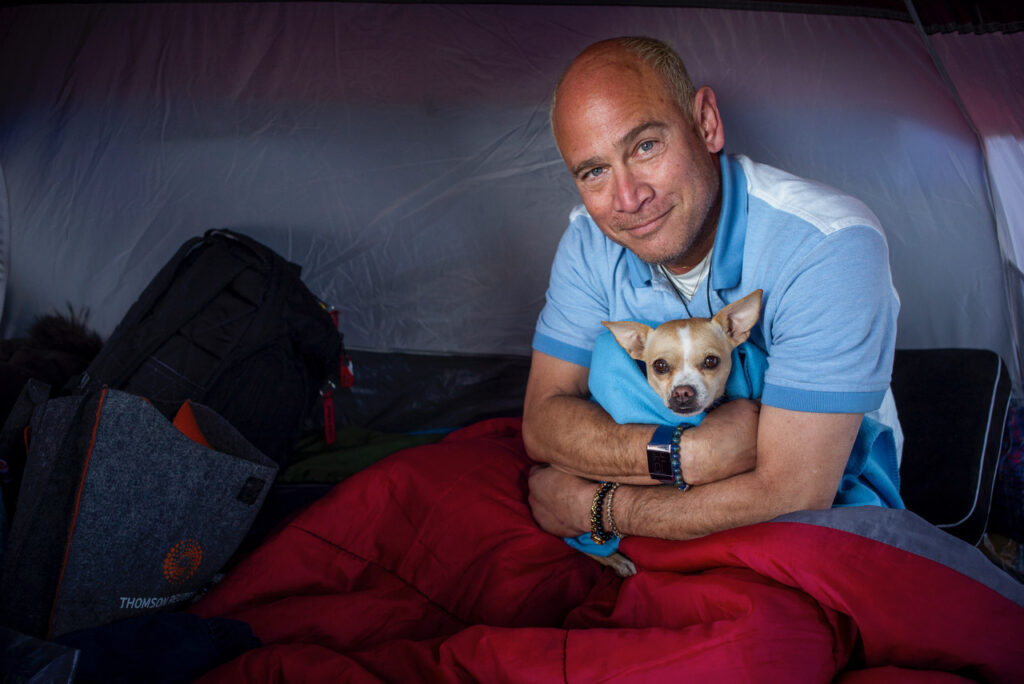
Miguel E Rodriguez in his tent with his dog on San Bruno Avenue between 15th and Alameda in Feb. 2019. He is no longer there and the site has had numerous other residents since.
Since April of 2020, shelter waitlists have been closed, effectively cutting off voluntary shelter access. The city is thousands of shelter beds short of what is needed and the result is there for all of us to see: Literally thousands of San Francisco residents are forced to sleep outside through no fault of their own—subjecting them to brutal conditions and harming all San Franciscans in the process by sweeping the housing/homelessness crisis under the rug. The law certainly should not protect this kind of “disappearing act.”
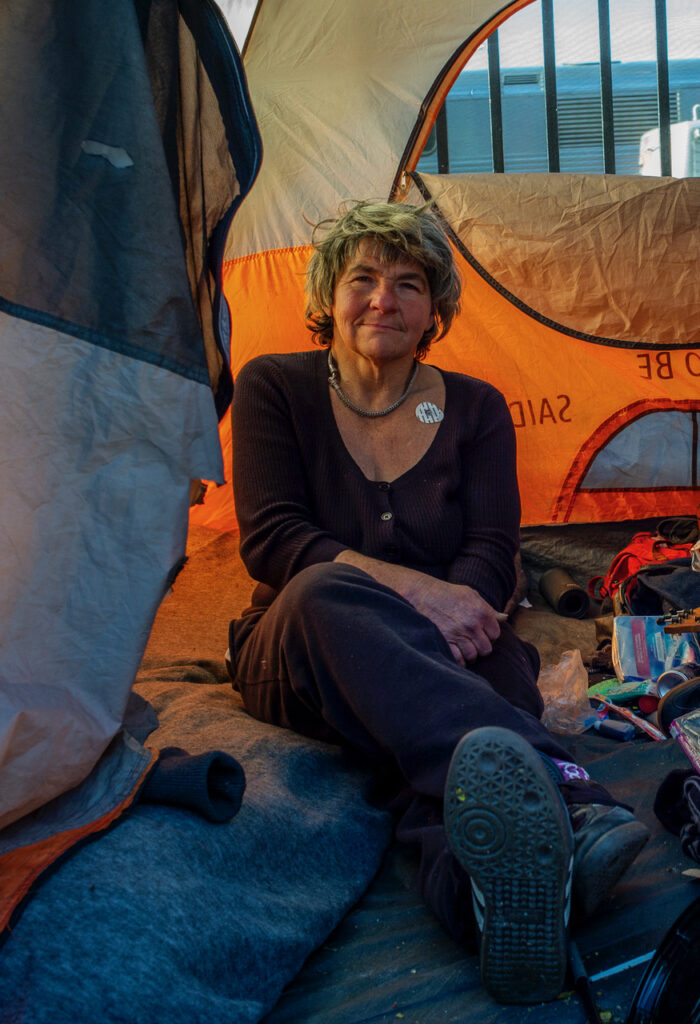
Atheina “Addie” Covington, 51, on King St at 5th. She has spent 14 years on the street. Addie was being moved off this spot on the day we talked and I photographed her. I have not seen her since.
Over many years, it has become clear that San Francisco reacts to this issue only via pressure—vocal complaints from housed residents, businesses, op-ed pieces and national attention from politicians and news outlets currently on a “dome loop” jack. While politicians and others demand the quick “solution” of the heavy hand, I can tell you first-hand that more of the same is not working. The city needs real, lasting change on affordable housing to end this crisis—not brutalization under the pretense of offering services it is obvious do not exist.
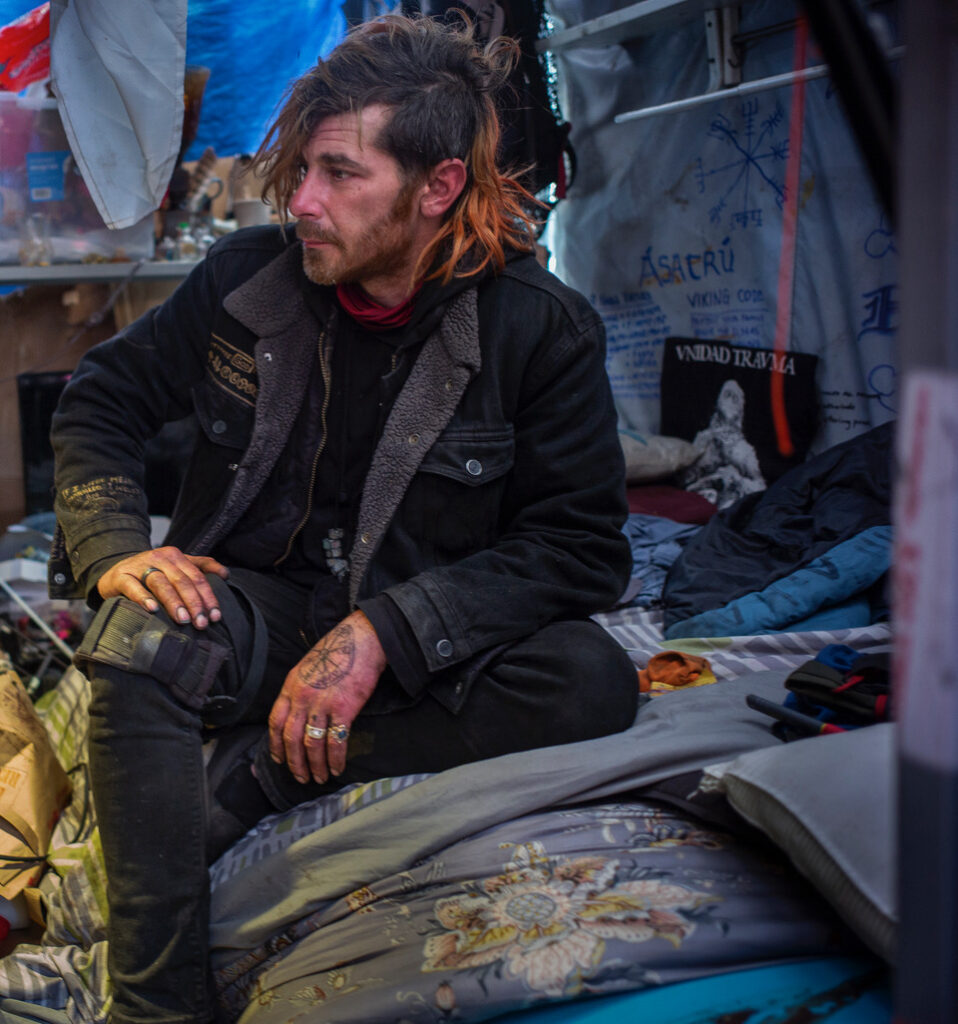
Andrew Douglas at home on Dore Street in May, 2022. He is no longer there.
The recent lawsuit is the only way those, literally on the ground, can get the city’s attention. It is an effort to protect their rights and gain some relief from current city practices, which result in constant displacement, as well as the trauma caused by stress and instability.
This lawsuit is the only way to force the city to do its job of providing residents, housed and unhoused, with a workable solution for all concerned groups: long-term housing. Contrary to Nagel and Brooke’s assertions, it is exactly the time for such a lawsuit to shape our community’s renewed urgency around the affordable housing crisis.
We live in divided times, and San Francisco’s vilification of the unhoused is an attempt to divide us as a community instead of acting to make the city a better place for all of us to live.
My photography and journalistic work over 45 years relating people’s stories from our workplaces to our jails, to the living rooms of the unhoused—has astonished me. I am amazed by the openness, generosity, and humanity of most of us. Treating people like they either don’t exist or are worthless is an insult to all of us.
“Meet” a few of San Francisco’s unhoused residents and read their stories here and here.
Robert Gumpert is an acclaimed documentary photographer who has spent the last decade documenting and photographing the streets of San Francisco.




